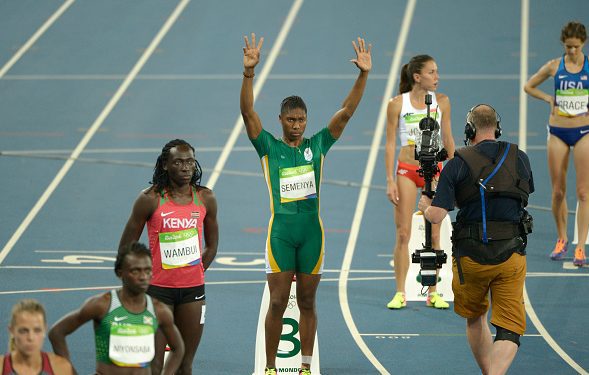Will hormone testing make a re-appearance in athletics?
In 2015, the courts ordered the IAAF to halt gender testing. Now that the two-year ban is up, will it make a reappearance?

A new report spearheaded by members of the IAAF has concluded that higher levels of testosterone in female athletes results in enhanced performance.
This report, now published by the British Journal of Sports Medicine was also funded by the IAAF and WADA. It will be used by the IAAF to justify their hyperandrogenism regulations to the Court of Arbitration for Sport (CAS) this summer. That meeting is set to go ahead in late July after the CAS ordered a two-year suspension of the IAAF’s regulations back in 2015.
What are the hyperandrogenism regulations?
The regulations imposed on athletes by the IAAF state that there is to be a clear divide in categorizing male and female athletes in high-level competition and that is largely determined by testosterone levels. Under these regulations, female athletes often had to prove eligibility to compete in the female category. This meant that they would have to be tested to check if testosterone levels were “below the male range.” Under these rules, certain cases (most likely female with hyperandrogenism or intersex athletes) would be reviewed by an IAAF medical team. Sometimes this could result in the team referring an athlete with hyperandrogenism for full examination.
“Gender testing” is a term commonly used to describe this practice. In such cases, athletes often have undergone hormone replacement therapy in order to to meet requirements.
This process however was halted in 2015 when a Indian athlete Dutee Chand took the IAAF to the CAS on July 27. Now that the two-year ban is nearly up, the CAS will meet with the IAAF to decided whether or not it will continue. In this two-year window, the sport’s governing body had to come up with evidence to counter this suspension and prove why such regulations must exist.
South African 800m intersex athlete Caster Semenya often comes up in talks about these regulations. The middle distance runner took gold in Rio last year and has been known to undergo such tests in order to compete in recent years.
The initial basis for the testing had been the idea that female athletes with hyperandrogenism had performance benefits from their genetic condition and therefore had an unfair advantage over female athletes born with lower levels of testosterone. This new study will be presented to support this theory.
The IAAF’s findings
It is authored by Dr. Stéphane Bermon and Dr. Pierre-Yves Garnier. Dr. Bermon came to this study with a background as having worked in an IAAF and IOC group dedicated to hyperandrogenic and transgender athletes. Garnier, on the other hand, is the director of the IAAF’s Health and Sciences department.
In their work, they studied 2,127 athletes who competed in the 2011 and 2013 World Championships. Women with higher levels of the hormone were found to have had a 1.8 to 4.5 per cent advantage over their competitors.
Bermon commented on the findings saying: “Our starting position is to defend, protect and promote fair female competition. If, as the study shows, in certain events female athletes with higher testosterone levels can have a competitive advantage of between 1.8 to 4.5 per cent over female athletes with lower testosterone levels, imagine the magnitude of the advantage for female athletes with testosterone levels in the normal male range.”
What about World Championships?
With the World Championships around the corner, the big question is whether or not this study and the two-year suspension deadline will have an affect of the treatment of athletes preparing to race. It will not. The IAAF is preparing to make its case to the CAS. The suspension remains in place while the CAS’ decision on whether or not to lift it remains pending.


